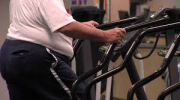BLOGS AND OTHER INFORMATION
WHAT IS TEMPO WHEN YOU ARE STRENGTH TRAINING?
I will be giving away 5 complimentary strength sessions incorporating how tempo training will benefit you in your training. Being a qualified Strength and Conditioning Coach gives me the tools to help you achieve your results. See below for details.
Think you know all there is to know about program design?
Everyone's familiar with the basic components of a strength-training program, like sets, reps, rest periods, exercise selection, how many days per week you train, etc.
1 – What is tempo training?
I was first introduced to time under tension (TUT) training through Nick Stock a highly regarded ctrength and conditioning coach. He may disagree on some of the following definitions, but, here is the basic gist of TUT.
There are four numbers that constitute the tempo of an exercise, so it may look something like this:
2-1-2-1
The first number (2) is the eccentric, or lowering, component of the lift.
The second number (1) denotes any pause at the midpoint.
The third number (2) is the concentric, or lifting, component.
Finally, the fourth number (1) denotes any pause at the top.
A 2121 tempo makes perfect sense on lifts that start with an eccentric, or lowering phase, like a squat or bench press. You lower the bar for 2 seconds, a pause at the bottom or midpoint, and then you return to the starting position. Reset and go again.
However, people get confused with exercises that start with the concentric portion of the lift such as chin-ups and barbell curls. Just remember, the first number is always the eccentric, and the third number is always the concentric, and you'll be good to go.
2 – Who should use tempo training?
Everyone should use tempo training at some point during their workouts.
All strength/power athletes can benefit from slower TUT's that focus on the eccentric in the off-season as this will develop body control, connective tissue strength and, of course, hypertrophy.
However, as you get closer to your specific event, you'll need to become more "sport" specific with your TUT training. If you're a power or Olympic lifter, there's no reason to knowingly slow down your squats. As the saying goes, "practice like you play."
3 – When should you use tempo training?
We really have two questions here:
When in a workout should you use tempo training?
When in a training career should you use tempo training?
During a workout, it can be argued that tempo training can be included for literally every exercise. It might not be necessary, but it can play a role.
Regarding training career, I'd argue that those who are younger or earlier in their training career will benefit more from focusing on their TUT's than more advanced athletes. Not only do they need the connective tissue and strength base, but they need the body awareness as well.
4 – Where should tempo training be used?
The gym is the place
5 – Why should you use tempo training?
Here's just a brief list:
Improved body awareness.
Improved control of lifts.
Development of connective tissue strength.
Improved stability.
6 – How should you use tempo training?
I use tempo training for all my clients.
Depending upon your periodisation, Endurance is different from Hypertrophy which is different from Maximum Strength.
Summary
Using time under tension in your programming won't magically make it the best program ever written, but using TUT prescriptions in conjunction with the other elements of program design can deliver a better training effect and better results.
Win a Complimentary Strength Session with Strength and Conditioning Coach – Phil Baird.
I will give the first 5 people who hit reply and type in “yes” to this email a complimentary 45 minute strength session.
Hit reply and say “yes”
How Progressive Weight Training Could Fight Ageing
A complimentary introduction to weights consultation awaits at the bottom of this email.
Have you been feeling a little weaker as you’ve gotten older? Or have you noticed that your physique might not be what it used to be?
If you have, don’t worry; you’re definitely not alone. And although you’re probably reluctantly chalking it up to age, the truth is you don’t have to.
By training your muscles regularly, you could rebuild the strength and musculature you had in your 30s—which is just a shade outside of your peak period for muscle maturity.
Weight Training: Secret to Feeling Younger
Studies have shown that men and women in their 50s and 60s who began supervised weight training were able to add the strength and musculature found in an average 35 year old—someone 20-40 years their junior. And it doesn’t take particularly long, either. You just have to stick to a plan.
Revive Dormant Muscles
But that doesn’t mean things are going to work exactly the same as they used to. As you age, different things happen to your muscle fibers. Some of them die, and this is especially true if you haven’t been exercising. Sedentary adults—those who spend a lot of time watching TV, driving, or sitting at a desk—can lose up to 40% of their total muscles by the time they turn 80! Other muscles stay alive but can atrophy with age
and inactivity. Those are the ones you can seek to activate, strengthen, and grow.
And that’s really all that matters. You won’t be able to grow new muscle cells or fibers (which may not be possible in ever body)—but you’ll be able to increase the size and strength of the muscle you already have. The way to do this is through regular and progressive weight training and a protein-rich diet.
Progressive Weight Training
Progressive weight training means you continue to work with heavier weights as you go, causing muscles to fatigue. In order for your muscles to strengthen and grow, you have to work them to failure—meaning you couldn’t possible complete one more repetition of a movement without help. Studies have shown that weight training three times per week and working in rep ranges of eight to 12 per set is the best way to grow and strengthen muscles. Performing two to three sets per exercise, per muscle group, is the best way to do this. After the eight to 12 reps, take a rest for about a minute, then perform your next set. And remember: select a weight that causes you to fail between eight and 12 reps.
What now?
If you haven’t been to our gym for a while you’re going to want to go in for an orientation and speak to me, Plus Fitness, Thornleigh’s resident personal trainer, Phil Baird. I have the experience with older adults that you are looking for.
I will show you how to safely perform exercises and get on the right track.
Contact me either by phone email or visit me and I will give you a complimentary introduction to weights consultation.
15/06/2015
THE POSTERIOR CHAIN AND WHAT IT WILL DO FOR YOU
By reading this article you will be able to solve and correct that nagging back pain you have. The Posterior Chain is a group is a group of muscles made up of your lower back, glutes, hamstrings and... More
29/05/2015
WHAT IS THE FAT BURNING ZONE?
With the recent proliferation of Heart Rate monitors in the form of Fit Bits and other devices I thought it would be appropriate to have a discussion on what heart rate zones are best for fat loss. There have... More
20/05/2015
HOW MUCH EXERCISE DO WE REALLY NEED?
Lots of people ask me this question and with the amount of material available on the internet and in books and magazines it is very confusing. So I am going to break all this down and come up with the right... More
13/05/2015
THE IMPORTANCE OF STRETCHING
Last week after an awesome training session with one of my favourite clients I said to her that it was that time of the session when we do the best part, the stretching. My client has always been reluctant in... More
05/05/2015
OVER 50’S STRENGTH AND MUSCLE BUILDING
So you have reached the dreaded 50 year old mark. You feel that embarking on a muscle building program is not probably for you. I am going to show you how, even at this age, strength and health are even more... More



Office hours
Sun 8am-10amMon-Fri 6am-8pmSat 8am-11am
Contact form
Home | About Us | Our Services | Gallery | Lifestyle News I Workout of the Week I Contact
